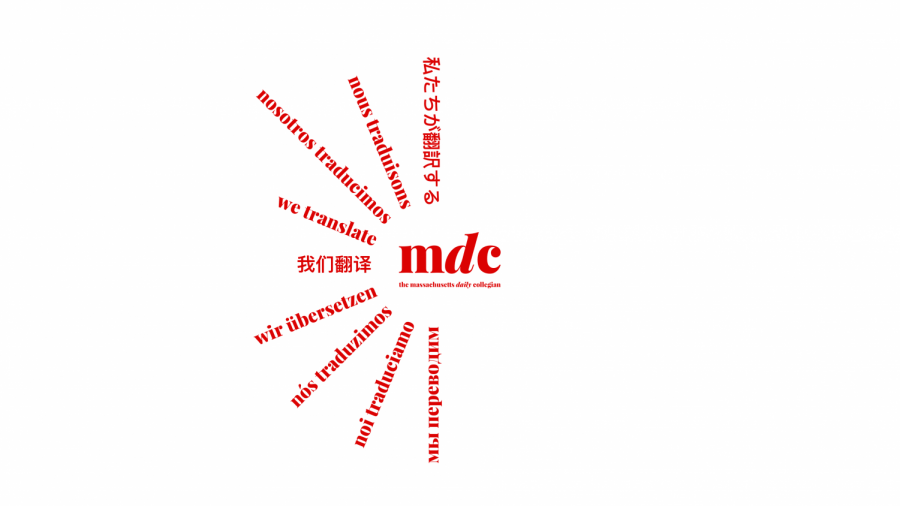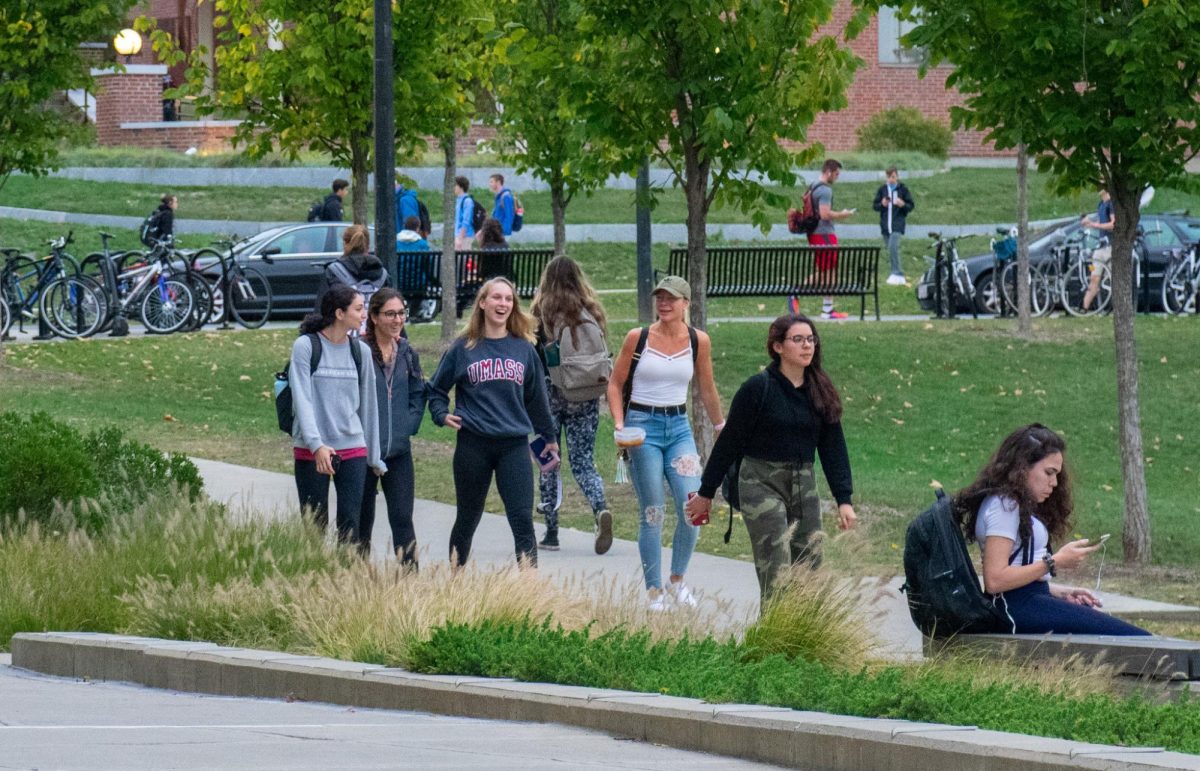Available in: Chinese, French, German, Italian, Japanese, Portuguese, Russian and Spanish.
Who are the translators and editors?
Translators are either native speakers, heritage speakers (those who speak a language at home, but do not have much written experience) or are currently learning the target language. Although all of the current editors are native speakers, we consider experience using the target languages in academic settings and immersion when making hiring decisions.
What articles get translated? When do they get translated?
Each language is assigned a day of the week between Monday and Thursday; larger departments, such as French and Chinese, work on two days. On their assigned day, translators pick an article published in the Collegian that day, based on interests and newsworthiness.
The number of articles translated is determined by the number of translators in the department. For example, French has four translators, so four articles will be re-published in French each week. Japanese has one translator, so one article will be translated into Japanese each week. As more translators and editors become involved, we will have the ability to translate more articles. Each translator has about 24 hours to work on their article before passing it along to the editor of the language.
“I try to strike a balance between how interesting the article is to me and how important it is to the UMass community,” Jonathan Heinrichs said. “If it is both interesting and important, then it’s a sure pick for me.”
Do we cover breaking news?
Yes. When there is breaking news, the department receives the article from the news section. From there, one translator may translate the article on their own, or multiple translators from the same language will split it up. Editors keep in contact with their translators to make sure the article is being translated as quickly as possible, and to be available to answer any questions translations might have during the process.
What methods do we use to translate?
First, the translator reads the entire article to develop an understanding of the content and the author’s voice. Then, they do a rough translation paragraph by paragraph or sentence by sentence. The translator will do either a literal or figurative translation and then the translation is read to make sure the sentences and ideas flow in the target language. For example, the concept of a “government shutdown” exists in English, but not in Chinese. In order to find a proper equivalent, the translator must figure out the underlying idea and connotation.
“It all depends on the context of the sentence, paragraph, or even article. Some sentences might be technically correct in terms of grammar and spelling, but still wouldn’t accurately reflect what the author meant, which is why services like Google Translate can’t replace human translators.” -Drew Sullivan, Portuguese translator
For words or phrases that are difficult to translate or are not yet known, we use a variety of resources. Linguee and WordReference are two online dictionaries that provide definitions with examples of the word in context. Additionally, each language department keeps a running glossary of technical words and phrases that frequently appear in articles.
Translators are also encouraged to ask for help from each other, their editors, classmates and friends and family who have an understanding of the target language.
What does an editor look for in a translated article?
Editors looks for grammar, stylization and content mistakes.
Are there any spelling or grammar errors? In romance languages, like Portuguese, Spanish, Italian and French, words have genders; German words have three.
Are the ideas presented in the English version carried over into the target language? Some editors, like Spanish editor Adriana Rozas, chooses to read the translated article first, to make sure that it reads as if the article was originally written in the target language, and then will read the English version. Others prefer to read the English version first.
German editor and Spanish translator Xenia Ariñez de la Vega does both.
“For more wordy articles, like op-eds, I usually read the original article first to get a good idea of the author’s voice and what the article is about. For more straight-forward articles, I read the translated article directly and check the original article to see what the author wanted to say, if a sentence sounds a little weird,” Ariñez de la Vega said.
Additionally, as a news source, we cover sensitive issues and topics that involve hate speech or actions that have no direct translation. Editors must make sure the gravity of these events are responsibly and accurately reflected.
“The hardest part for me is to translate discriminatory words or hate speech which often show up on breaking news,” Yurika Yamazaki, Japanese editor, said. “We do not get used to these words because there are no specific terms in Japanese which stands for those English words. However, I think we should translate even these words correctly to inform any students of what exactly happened at UMass.”
Translators will give a literal translation or leave the concept in English. Editors will then decide which is more appropriate for the situation, and may choose to include an explanation of the concept and its connotations in parentheses.
Why are these processes important?
No two languages express ideas the same way. In French, there is a much bigger emphasis on the differences between formal and informal speech than there is in English. So when translating articles, especially interviews, editors need to consider both context clues and cultural norms from the French-speaking world to decide on the appropriate translation. In Japanese, ideas are often expressed ambiguously, versus English, which is more direct. In Chinese, there are no past tense and plural words; instead, other concepts, such as phrases that mark time and measure, are used to give context.
“All of the preparation is for the accuracy, which is the most essential thing for translation.” Ying Hua, Chinese editor, said.
Where are the translated articles published?
Translated articles can be found at dailycollegian.com. We have a tab at the top of the Collegian’s website with a drop-down menu listing each of the languages provided.
Does the number of languages translated by the Collegian stay consistent?
In the English side of the newspaper, there is an editing process that each article must go through in order to be published. The three rounds of editing an article undergoes in English helps to ensure accuracy. Translated articles are also held to a high editing standard. In order to produce factual translations, it required that there is both an editor and a translator for the language. We do provide articles from last year and last semester in Korean and Vietnamese because, at the time, there was an editor and at least one translator. Currently, those language sections have one or fewer staffers, but we are looking to restart publication.
The Translations Department can be reached at [email protected].













